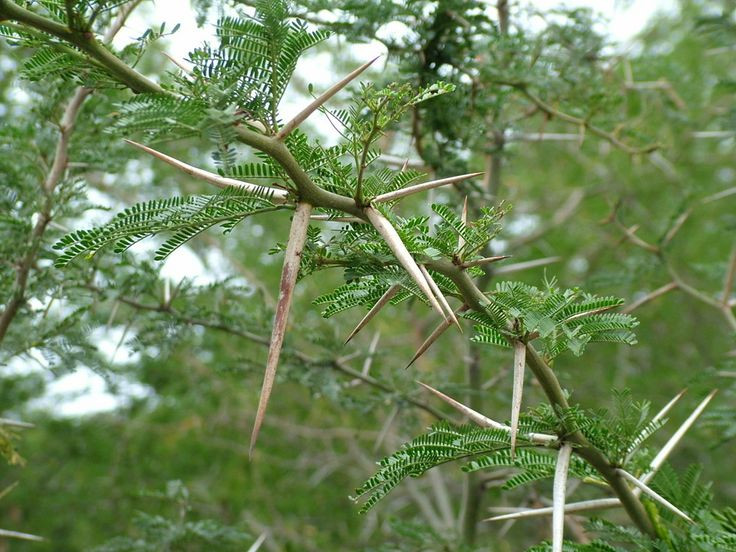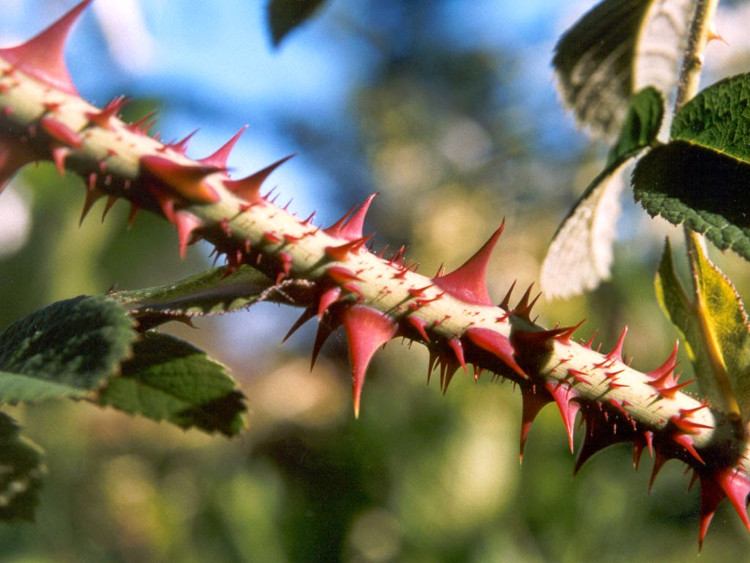9 mechanisms of plant protection
In the plant world, adaptive and self-defense mechanisms have created many rich plant species. Although they must always be tied to the soil, they cannot move but they are not just victims of standing still waiting for danger to come. In fact, some species grow spikes to protect them from herbivores, even kill them. Some plants even secrete compounds to warn others of danger are stalking.
According to the synthesis of Britanica, plants have 9 self-defense mechanisms, in which only the so-called "thorns" in Vietnamese have different types.
9. Gai (Thorn)

This type of thorn is actually a branch of a tree or a trunk.
The type of thorns whose English name is Thorn is actually branches or stalks (branch or stem). Thorns of lemon, orange, and mandarin plants . are of this type. Even though "Every rose has its thorns" - pink that has no thorns, the spikes of roses are not this kind.
Mechanism of spikes? Of course it is. Crash into things that harm them.
8. Gai (Prickle)

This type of thorn is very thick and short, sharp, sharp.
As mentioned, roses have a different kind of thorn, not just the one mentioned. It protrudes from the bark of the tree, like freckles, but very sharp. They form a shield to protect the tree. Often this type of thorn is very dense and short, sharp, sharp, however, there are some types of psyllid that are so small that they can squeeze into the thorns and suck the sap, pretending to be another thorn to avoid the predators.
7. Gai (Spine)

These are common spines in cacti.
This type of thorn is the type commonly found on cactus. They help protect the plant's succulent cells from other species, and partly obscure the harsh sun of the desert (spines in the desert are often smaller). According to many scientific documents, thorns of cacti are leaves that have been consumed to help plants reduce the amount of evaporation when living in arid deserts.
6. Feather

The hairs of this nettle can cause pain if you accidentally touch it.
If you accidentally touch nettles, you will know how the hairs of the tree can cause pain. Nettle and some other types have a furry coat to protect them. If caterpillars perch on these hairy plants, sooner or later they will be pierced by the fibers. Some plants also have the ability to spread poison into their wounds. More specifically, some other types can cause permanent nerve damage, even leading to death.
5. Cells

Tree of life.
Not all plants have definite clear defenses. If you look at the types of spikes and feathers as barriers, then the cells are like mines. Special cells contain various defense compounds, from sharp crystals to painful substances.The cell is activated when the first defense layer has been broken . The longevity Mon (in the picture) often contains phagocytes that release calcium Oxalate crystals into the mouths of animals that eat it, then secrete an enzyme similar to the reptile - leading to paralysis.
4. Conference

Several strains of Acacia South America and Africa are both home and food for ants.
Many plants need "mercenaries" to protect them. Several types of acacia trees in South America and Africa are both home and food for ants. The ants live in the thorns of the plants and eat the substances that the plants secrete as a food for them. In contrast, ants protect trees from attackers from animals, plants, or mushrooms. They even bite off the leaves of any tree that dares to enter the area around their trees. In some experiments, when people removed ants from trees, the trees died.
3. Camouflage

These trees, often their leaves close when touched.
Shame plants (Mimosa pudica) are typical of this mechanism. They close the leaves when touched, making them look dead, unattractive to other species.
2. Chemical signals

Plants can also communicate through the release of root chemicals.
Some plants are attacked by insects or subject to extreme conditions such as droughts that can warn other plants by secreting volatile organic compounds (VOCs). These compounds precipitate on some surrounding plants. This can increase the amount of poison to repel the enemy, or the tree itself will release its own compound to lure them into it. Some recent experiments have shown that plants can also communicate through the secretion of chemicals by rooting or even through symbiotic fungal networks.
1. Poison

Everyone knows that many types of plants are poisonous.But the poison to this species is not necessarily toxic to the other species.
Everyone knows that many types of plants are poisonous. But the poison to this species is not necessarily toxic to the other species. For example, birds, are not affected by urushiol, poison of ivy and even like their fruits. Tree-eating Monarch butterflies Earring and absorb glycosides produced by plants into their tissues, making them toxic to predators. Of course, humans have used these toxins to make pesticides or poison drugs.
- Cancellation of pesticides in cement kilns
- Vietnam joined the New Plant Variety Protection Association
- Close-up of the spiders' abnormal self-defense mechanism
- Damage protection at US nuclear plant
- A series of 'hearing is nausea' defense mechanisms of animals
- Species protect themselves when bitten
- Production of plant protection drugs from neem
- Striving to increase forest coverage to 45% by 2020
- National Plan to treat pollutants difficult to decompose
- EU proceeds to issue a ban on endocrine disruptors
- Discovered mechanisms for plants to have four different genotypes
- FAO approved a plan to protect plant genetic resources
 Why do potatoes have eyes?
Why do potatoes have eyes? 'Tragedy' the world's largest carnivorous life: Death becomes ... public toilet
'Tragedy' the world's largest carnivorous life: Death becomes ... public toilet Tomatoes were once considered 'poisonous' for 200 years
Tomatoes were once considered 'poisonous' for 200 years Detecting microscopic parasites on human face
Detecting microscopic parasites on human face